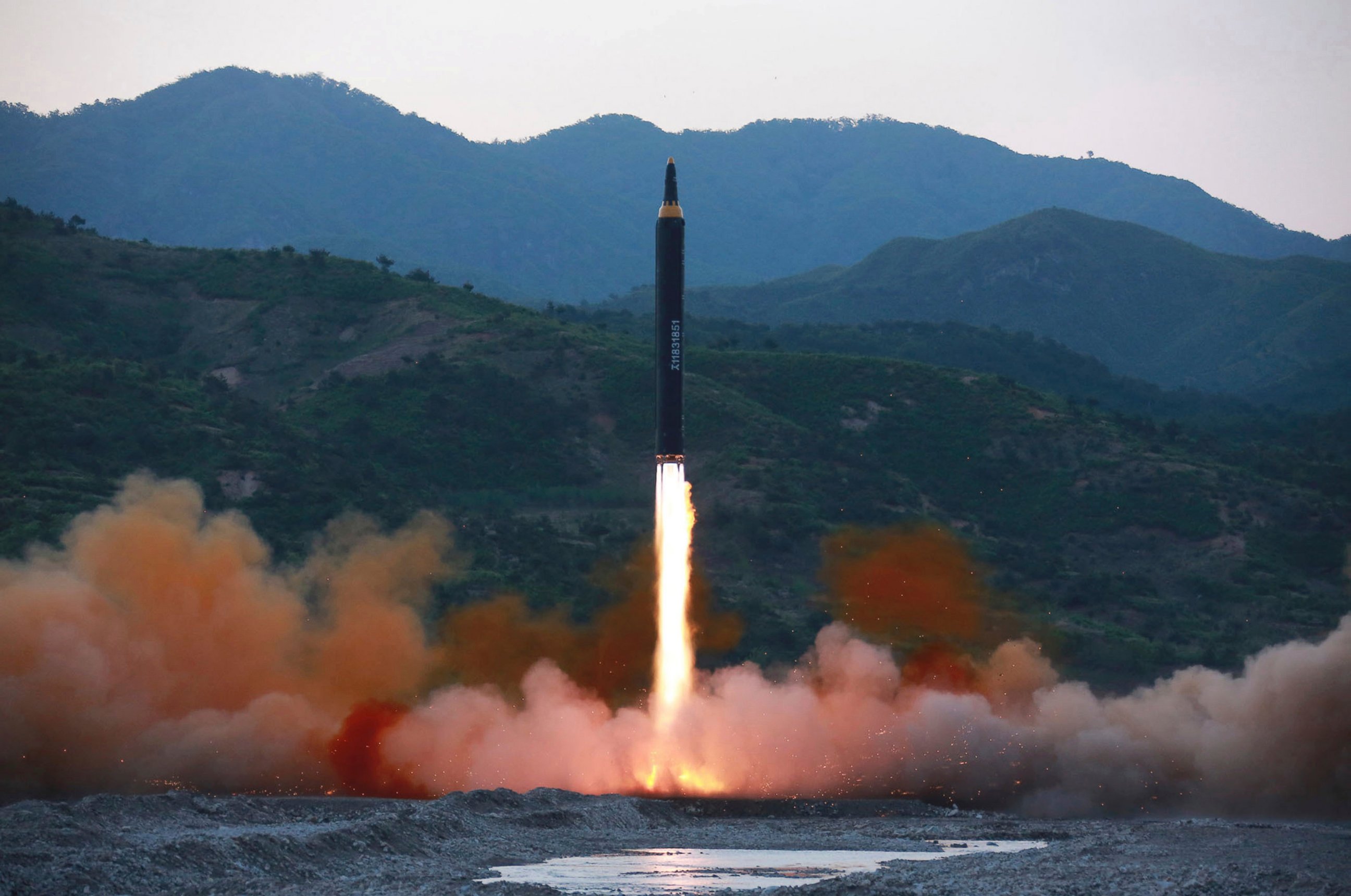What to know about North Korea's latest missile test
The KN-17 missile is powered by liquid fuel.
— -- The ballistic missile tested by North Korea this weekend reached a high altitude not seen in prior missile tests, raising concerns about the progress North Korea is making with its missile program.
The single-stage KN-17 reached an altitude of 1,200 miles, leading to speculation that it may be a medium-range missile capable of reaching that distance or greater if fired on a horizontal trajectory.
Here's what we know about the missile.
The KN-17 Missile
The missile was first seen publicly in a military parade in Pyongyang on April 15.
The Missile Defense Agency defines medium-range missiles as having a range of between 600 and 1,800 miles. According to U.S. officials, the KN-17 missile launched on a "lofted" vertical trajectory that sent it 1,200 miles (2,000 kilometers) in altitude.

Fired from a test site in Kusong, North Korea, the missile, which is powered by liquid fuel, traveled 435 miles horizontally before landing in the Sea of Japan.
The successful launch marked the first time the United States and its allies had an opportunity to gauge the missile's potential capabilities since three previous launches in April had failed.
U.S. intelligence originally assessed the missile as being a SCUD missile with extended range. But further analysis showed it was a new type of missile, given the designator KN-17, with a possible short range or medium range.
Why fire the missile at such a high altitude?
The high altitude reached by the missile indicates that it is capable of reaching the broader limits of a medium-range missile's maximum range.
It is believed that North Korea is carrying out launch tests with "lofted" trajectories to test the longer-range capabilities of its new missiles. Horizontal flights at greater ranges could potentially fly over Japan, a scenario that could trigger a response from the United States or Japan.
In February, North Korea used a "lofted" trajectory to test its new KN-15 solid-fueled missile. This weekend's successful test could accelerate North Korea's stated goal of developing an intercontinental ballistic missile (ICBM) capable of carrying a small nuclear warhead that could reach the United States.
On Sunday, North Korea's news agency claimed that the missile was capable of carrying a nuclear warhead. According to U.S. officials, there is no information at this time that verifies that claim.
Firing the missile at high altitudes could also help North Korea test the technologies needed for warheads to withstand the re-entry through the earth's atmosphere.